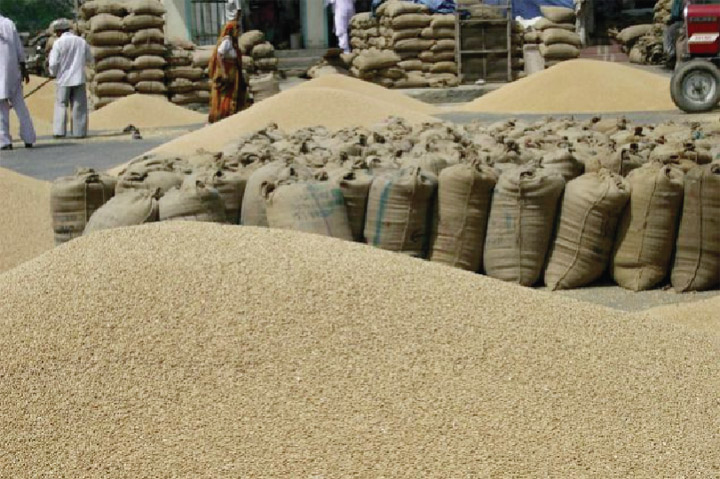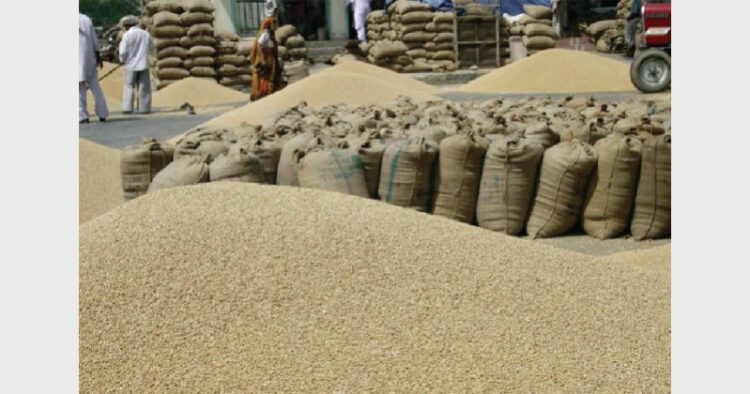
-Harshvardhan Tripathi-
For people living in urban centers such as Delhi and Mumbai it is difficult to fathom the recurring crisis in agriculture and of the farmers. Relying solely on television for agriculture-related news means urbane and upwardly mobile do not understand the real issues of farmers. For instance, last year the farmers of Jalandhar in Punjab had spread potatoes on the road. At the same time onion prices were more than Rs 60/- per kg. This raised a hue and cry over the skyrocketing prices of vegetables all over the country, especially in the urban India. However, the incidence of spreading potatoes on roads of Jalandhar did not get due importance especially when onion prices were rising. In fact, when onion prices were at Rs 60/- per kg, Jalandhar farmers were compelled to sell their potatoes at Rs 200/- per quintal. That is, one kg potato was available at Rs 2/- only! This forced them to bear tremendous loss and they were left with no alternative but to throw their crop of potatoes on the roads to press for their demand of proper price.
The moot question was why important crops like potato had to suffer such worse situation? This question becomes more relevant in the face of the fact that at that time potato was selling at Rs. 10/- per kg in Mumbai, Delhi and other cities. The stark reality remains that the farmers in various parts of India are facing similar difficulties for their different produces.
Leave aside the appropriate value the farmers do not even get the cost price for their crops. The NDA government led by Prime Minister Narendra Modi wants farmers to get proper price of their products. They should not be compelled to throw their products on roads. This is possible when the farmers are given access to markets across the country. Keeping this in view the Centre is determined to implement National Agriculture Market policy as early as possible.
National Agriculture Market would facilitate a potato producing farmer to deal straight with the trader in Mumbai and send the product directly to him. Similarly, a maize producing farmer of Purnea in Bihar could sell his crop to a big businessman. The plan appears to be a mirage but this can be implemented. The integrated marketing system of Karnataka has proved its utility. ‘E-markers services’ have been given the task of making all farm mandis on the lines of that in Karnataka.
‘Rashtriya E-markets services’ is the joint company of Karnataka Government and National Commodities and Derivatives Exchange’. This company is implementing the integrated market system and is the backbone of this scheme. The Central government has made a provision of Rs 200 crore for this scheme and this will be in force by 2018. This will join all trading mandis of the country with each other by electronic trading platform by financial year 2017-18. At present, the farmer deals with any trader or businessman in a nearby market and sells his produce at the best available price. Similarly, with this system in vogue, the farmers will have easy access to any businessman or trader in other parts of the country easily. This will facilitate a nationwide market online. At present there are 585 mandis in the country.
The Centre has plans to complete this scheme in three phases. 250 mandis would be made online by 2015-16, and by in 2016-17 another 200 mandis will be added. The remaining 135 mandis will be brought online in 2017-18. This scheme will be implemented by Small Farmers’ Development Association of the Agriculture Department of Government of India. Government proposes to provide free software to states to make online mandis. The government will also provide a maximum of Rs 30 lakh to each state to make this online platform. It will have facilities for soil testing in the mandis itself. Besides these, private mandis will also be joined with this scheme but they will not be given financial help from the government. Union Agriculture Minister Radha Mohan Singh had visited Hubli in Karnataka last year on 10-11 July with ministers and officers of 23 states to study this scheme.
The Agriculture Produce Market Committee (APMC) of Hubli is one of the modern mandis of the country. 100 out of 150 marketing committees in Karnataka are already joined with each other through integrated market system. They provide a model for the proposed national agriculture market system. So how will the government be able to double the income of the farmers by 2022 after this national agriculture market system is implemented? It will be solely because the government will join all the 585 mandis online by 2017-18. “Farmers are benefitted by online mandis. In Karnataka’s Tisur Mandi coconut used to fetch a rate of Rs 6,000 per quintal. But after conversion in online mandi, the same mandi gives the rate of Rs 13-14,000 per quintal,” says Manoj Rajan, CEO of REMS—the company that implemented unified market system at the National Agriculture Market Karnataka.
Similarly, the rate for moong dal got a raise of 35 per cent. In Bellari the ground nut prices have gone up by 25 per cent. The business of these online mandis in Karnataka is growing faster than envisaged. The 155 main mandis and 354 small mandis put together in Karnataka have achieved a turnover of Rs 31,000 crore. They trade in 92 main products. There are 31,473 businessmen who are registered in government mandis and 17,149 commission agents. The National Agriculture Market scheme seems to be in favor of every stakeholder associated with farming.
In fact, a few corporate houses such as ITC are already carrying out such initiatives. The ITC has developed a unique rural digital infrastructure network that has built a competitive and efficient supply chain that creates and delivers immense value across the agricultural value chain it has established with the farmers. ITC has also made significant investments in e-Choupal that web-enables the Indian farmer by providing Internet kiosks in villages. This initiative now comprises about 6,500 installations covering over 35,000 villages and serves over 4 million farmers. Currently, the “e-Choupal” website provides information to farmers across the 10 states.
(The writer is a Journalist and Advisory Editor at National Commodity & Derivatives Exchange)
And this is how National Agriculture Market will function
In Karnataka all the 100 mandis have been brought on one platform. Normally, the businessman has to obtain licenses for various mandis but here one needs only one license to operate in all the 100 mandis. The godowns have been given the status of sub-mandis in Karnataka. This has made easy for farmers to store their produce in a nearby godown and sell directly from there.
With the implementation of this national agriculture market system, each state would become a mandi for the farmers. The farmers and businessman can do trading from anywhere as all the states would be joined by an online platform.
The farmer needs to obtain a license which will be available in the state. The online mandis would change the lives of the farmer in a positive way. With this scheme a farmer in Karnataka can sell his produce to any businessman in Delhi or other states. For example, if a businessman wants to sell or purchase gram, all he has to do is to click the computer mouse and he can see the stock, price and quality of gram available in all the mandis in the country. He can participate in online auction too. Obviously, this will facilitate better pricing for the farmers and help government to balance the proportion of demands and supply in different parts of the country. Karnataka has become a model for all other states to follow in online agriculture marketing system. Other states are showing interests in this scheme. Manoj Rajan claims that if the state is really interested in this system it can implement it in just six months.
Yet, its not easy
But the path is not that easy. This scheme would entail more difficulties. Pukhraj Chopra, former chairman of Bikaner Anaj Mandi says, “National Agriculture Market is a good venture but it is being implemented in a hurry without giving attention to its bad effects. This will lead to friction between the local farmers and businessmen.” Now the local trader assures the farmer of all possible help, in anticipation of getting all the stock from him. But when the farmers sell their produce to outside businessmen at a higher rate online, their relationship will be disturbed. Chopra says, “Each state has different sets of rules to run its mandis and farmers or businessman would have to pay fees to carry the produce to other states. And if he has to cross several states then his difficulties would increase.”














Comments